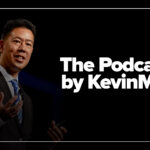Introduction: Financing cancer or fighting it?
Tobacco remains the single largest preventable cause of cancer worldwide, responsible for nearly 8 million deaths annually, including 1.2 million from exposure to secondhand smoke. Despite decades of public health efforts, global tobacco use continues to pose a significant threat to cancer prevention. The question remains: Are we truly winning the war against the world’s leading carcinogen, or are we merely negotiating with death?
Tobacco is more than just a leaf rolled in paper—it is a multi-billion dollar industry that fuels governments and devastates health systems simultaneously. Countries like China, India, and the United States rake in billions of dollars annually through tobacco taxes. Ironically, the very same governments that fund cancer treatment facilities are those that benefit from cigarette sales.
The global tobacco market is worth over $850 billion, and in some low- and middle-income countries (LMICs), the industry is a cornerstone of economic stability. For instance, China, the world’s largest consumer and producer of tobacco, generates a whopping 7 percent of its government revenue from tobacco taxes. In India, the tobacco industry employs millions, from farmers to factory workers, making it a political hotbed.
This economic dependency creates a dangerous paradox: governments tax cigarettes to discourage smoking but simultaneously depend on smokers to balance their budgets. It’s like trying to extinguish a fire while selling matches at the same time.
The economics of tobacco: a necessary evil?
The argument from pro-tobacco advocates is simple: economic interest. Banning tobacco would mean massive job losses for those involved in its production, distribution, and sale. According to global estimates, the tobacco industry supports more than 100 million jobs worldwide. But this narrative fails to consider the health care costs incurred from tobacco-related diseases, which far exceed the revenue earned from taxes.
The World Health Organization (WHO) estimates that the global economic cost of smoking is $1.4 trillion annually, including health expenditures and lost productivity. This is nearly 2 percent of the world’s GDP. For every dollar earned from tobacco, governments spend three on treating its consequences.
Countries like Australia and the United Kingdom have proven that increasing taxes, enforcing graphic warnings, and restricting advertising can drastically cut smoking rates—without economic collapse.
The truth is stark: the money governments earn from tobacco taxes is a mere fraction of what they spend treating lung cancer, oral cancer, COPD, and cardiovascular diseases. The economic argument falls apart when the cost of human life is calculated.
Cultural significance vs. health crisis
For millions, smoking is more than just a habit—it is ritualistic, cultural, and deeply emotional. In Southeast Asia, tobacco chewing is woven into daily life. In the Middle East, shisha smoking is a social tradition. This cultural embedment complicates global efforts to curb tobacco use.
When India tried to ban Gutkha (chewing tobacco) in 2012, the black market exploded overnight. People weren’t just addicted to nicotine; they were addicted to the ritual. For many, smoking symbolizes rebellion, relaxation, and even community. Anti-smoking campaigns often clash with this cultural attachment, making eradication a greater challenge than just regulation.
To dismantle smoking’s grip, public health strategies need to address not only addiction but also the cultural narratives that sustain it. Awareness campaigns must be as powerful and persuasive as the rituals themselves.
Regulation vs. prohibition: lessons from history
Banning a substance outright is no simple task. The prohibition of alcohol in the United States (1920–1933) serves as a chilling reminder. What was intended to curb alcohol consumption led instead to organized crime, bootlegging, and unregulated markets.
Would a global ban on tobacco face the same fate? Most likely, yes. The tobacco industry is not just a corporate entity; it is a political powerhouse. Lobbyists fund political campaigns, influence trade policies, and shape legislation. Nicotine smuggling could very well become the next drug cartel economy.
The WHO’s Framework Convention on Tobacco Control (FCTC) is a bold attempt to regulate this global epidemic. Its MPOWER strategies include:
- Taxation and price increases — Proven to reduce smoking rates, especially among youth.
- Graphic health warnings — Mandated in over 120 countries; a constant reminder of tobacco’s deadly consequences.
- Advertising bans — Comprehensive bans have led to 7 percent reductions in consumption within two years.
- Public smoking bans — Enforced in major cities worldwide, significantly reducing secondhand smoke exposure.
- Cessation programs — Community-based initiatives have gained traction in high-burden regions.
Yet, the Achilles’ heel of these measures is inconsistent enforcement, especially in LMICs where tobacco giants flex their financial muscles.
Big Tobacco’s counteroffensive: the rise of e-cigarettes and heated tobacco products
As global regulations tighten around traditional cigarettes, Big Tobacco has seamlessly pivoted to e-cigarettes and heated tobacco products (HTPs). Marketed as “harm reduction,” these products are seducing a new generation into nicotine addiction.
Countries like India and Brazil have outright banned e-cigarettes, citing concerns over rising youth addiction rates. Meanwhile, the United States and the European Union have taken a regulatory approach, focusing on age restrictions and marketing controls.
This rebranding effort by tobacco giants threatens to undermine decades of progress. For every pack of cigarettes not sold, an e-cigarette is marketed as a “safer” option—fueled by flashy advertisements and celebrity endorsements.
Global success stories in tobacco control
While challenges remain, some countries are proving that bold action works:
- Bhutan: The first country to implement a complete ban on the sale of tobacco products.
- Uruguay: A pioneer in plain packaging, surviving legal challenges from Philip Morris International.
- Australia: The first to enforce plain packaging laws, resulting in a historic drop in smoking rates.
- New Zealand: Plans to ban smoking entirely for future generations—those born after 2008 will never legally buy cigarettes.
These nations serve as beacons of hope, proving that political will and grassroots advocacy can drive impactful change, even in resource-constrained settings.
The path forward: freedom or responsibility?
Tobacco is unlike any other consumer product. It kills when used exactly as intended. The comparison to sugar, meat, or alcohol is flawed, as these products do not guarantee death with normal consumption. The time has come to choose between economic gain and public health.
The WHO’s MPOWER strategy must evolve beyond policy into global enforcement, with accountability for those who profit from addiction. Governments must stop dancing with the devil, financing cancer treatment with one hand while pocketing tobacco tax revenue with the other.
Conclusion: a battle worth fighting
The war against tobacco is far from over, but it is a battle worth fighting. Reducing tobacco consumption is not just a cancer prevention strategy—it is a fight for global health equity. If we truly believe in health for all, then it is time to stop selling death in shiny packs.
The world needs to decide: Are we financing cancer or fighting it?
Bhavin P. Vadodariya is a surgical oncologist in India.




















![How should kratom be regulated? [PODCAST]](https://kevinmd.com/wp-content/uploads/Design-2-190x100.jpg)



![How genetic testing redefines motherhood [PODCAST]](https://kevinmd.com/wp-content/uploads/Design-3-190x100.jpg)
